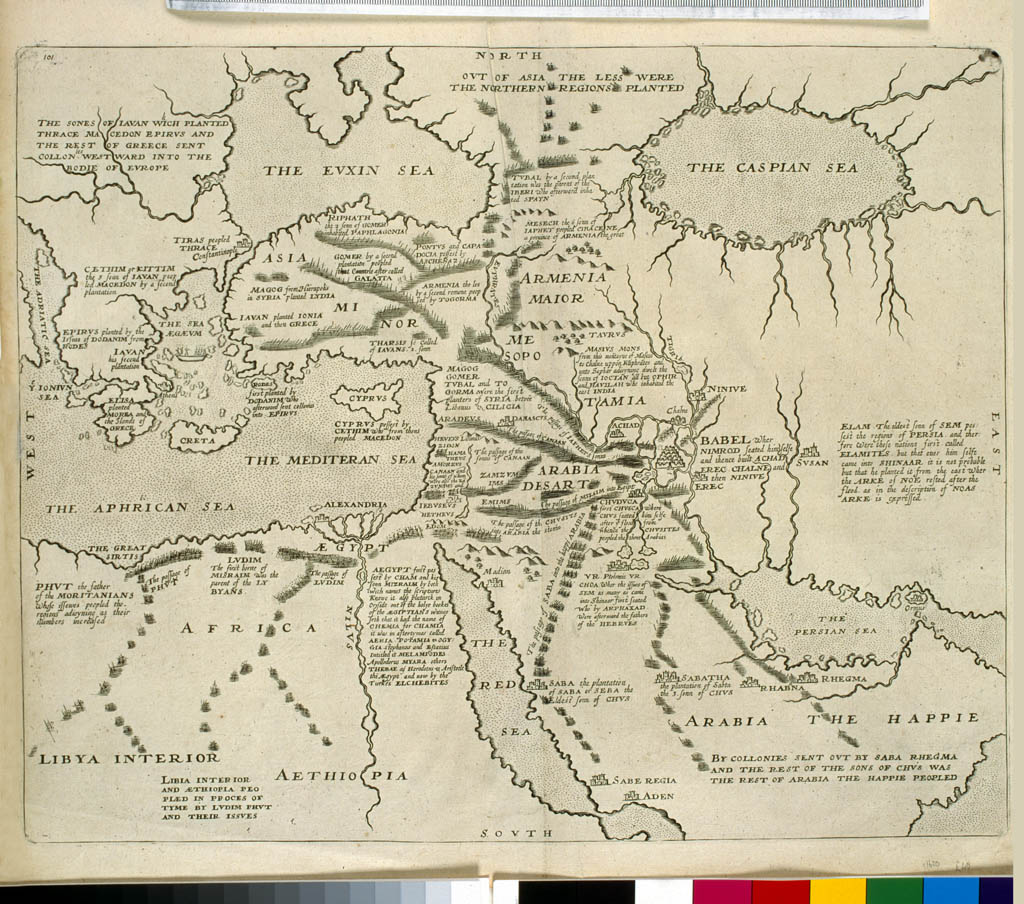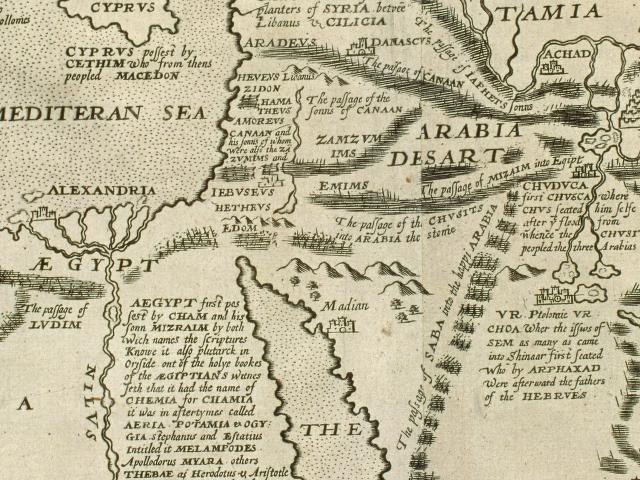
This map, titled as The Near East and shown in its entirety above, was created by engraved William Hole, mostly likely in 1614. Although his date of birth is unknown, Hole was an established engraver by 1607 and designed some remarkable works, including a Map of Virginia detailed by Captain John Smith. Most noteworthy in his career was his appointment as engraver for the Mint in London in 1618, and equally significant was his role as the first man to engrave music on copper plates. However, besides these accomplishments, little is known about his actual life.
The date and purpose behind this particular map remain unknown, but despite its ambiguous origin, it is nevertheless very out of the ordinary. In the zoomed version below, it is easier to see the ample writing on the map. Although the language is dated, it is relatively simple to read and understand the abundant notes and details Hole provides. In fact, what first attracted me to this particular map was the generous amount of writing. A typical map shows readers the geography of a certain region and may label specific regions or locations; however, this map provides facts associated with places, as well as visual details such as tiny buildings and mountains.
One of the most interesting details of this map is the small tower of Babel and its inscription, which reads,
“BABEL, wher NIMROD seated himselfe and thence built ACHAD EREC CHALNE and then NINIVE EREC.”
In spite of the fact that Babel was no longer erected in the Near East (if at all), it is interesting to see that Hole includes it on his map; he even incorporated Nimrod, Mesopotamian ruler and figure in the biblical Book of Genesis, and hints at the story of the tower of Babel.
Behind this map, with its fascinating drawings and appealing notes, it is evident that Hole is perpetuating the attractiveness of Western Asia by linking this area with the bible. Scholars have the overwhelming need to associate this world with the bible. Because the Near East is the center of the Christian religion, academics like Hole draw curiosity by emphasizing “actual” places featured in the bible, despite the fact that they may or may not exist.
For further viewing of this map, see link. Part of the Walker Collection of the Map Section of the University of Melbourne’s Image Database.

